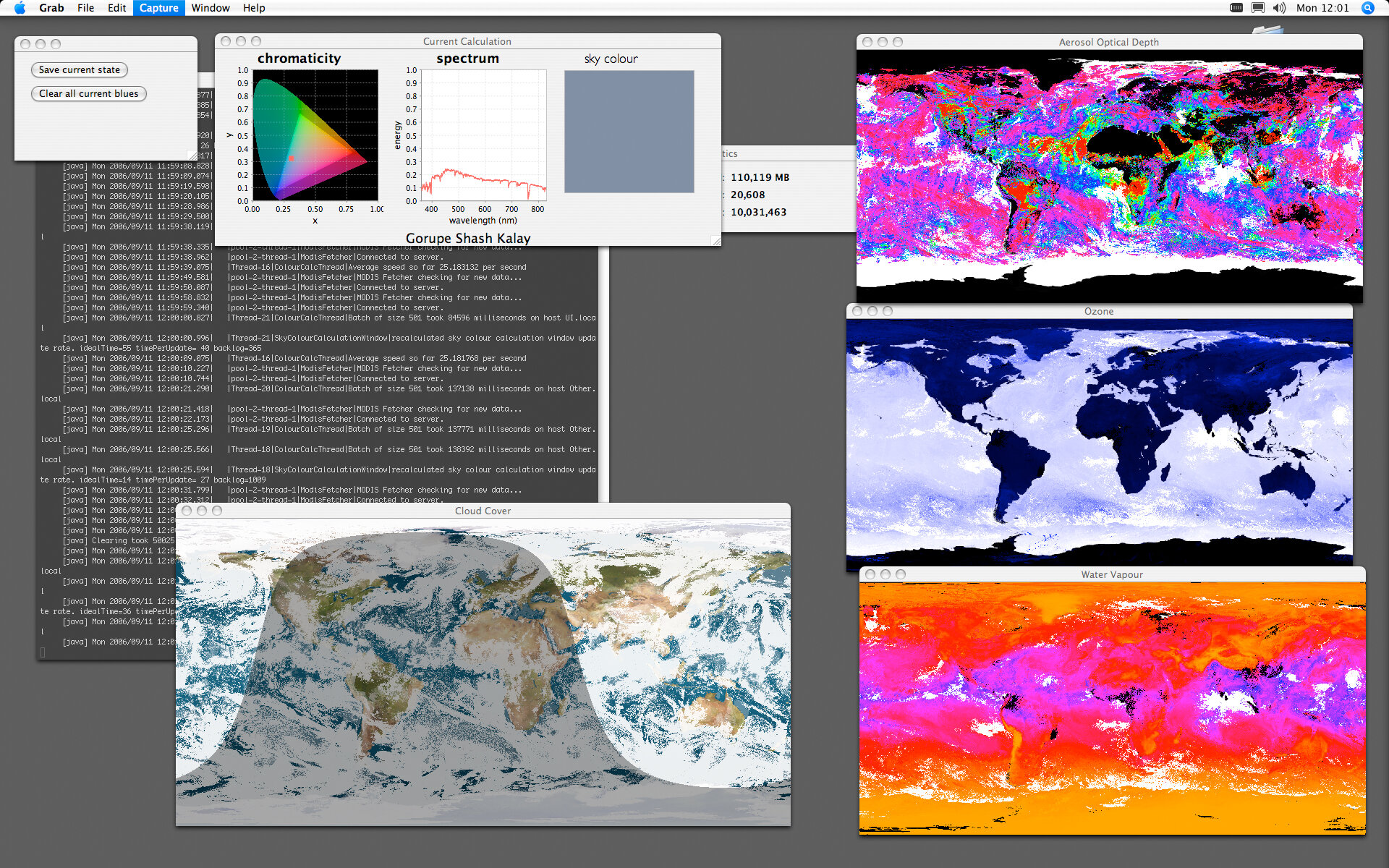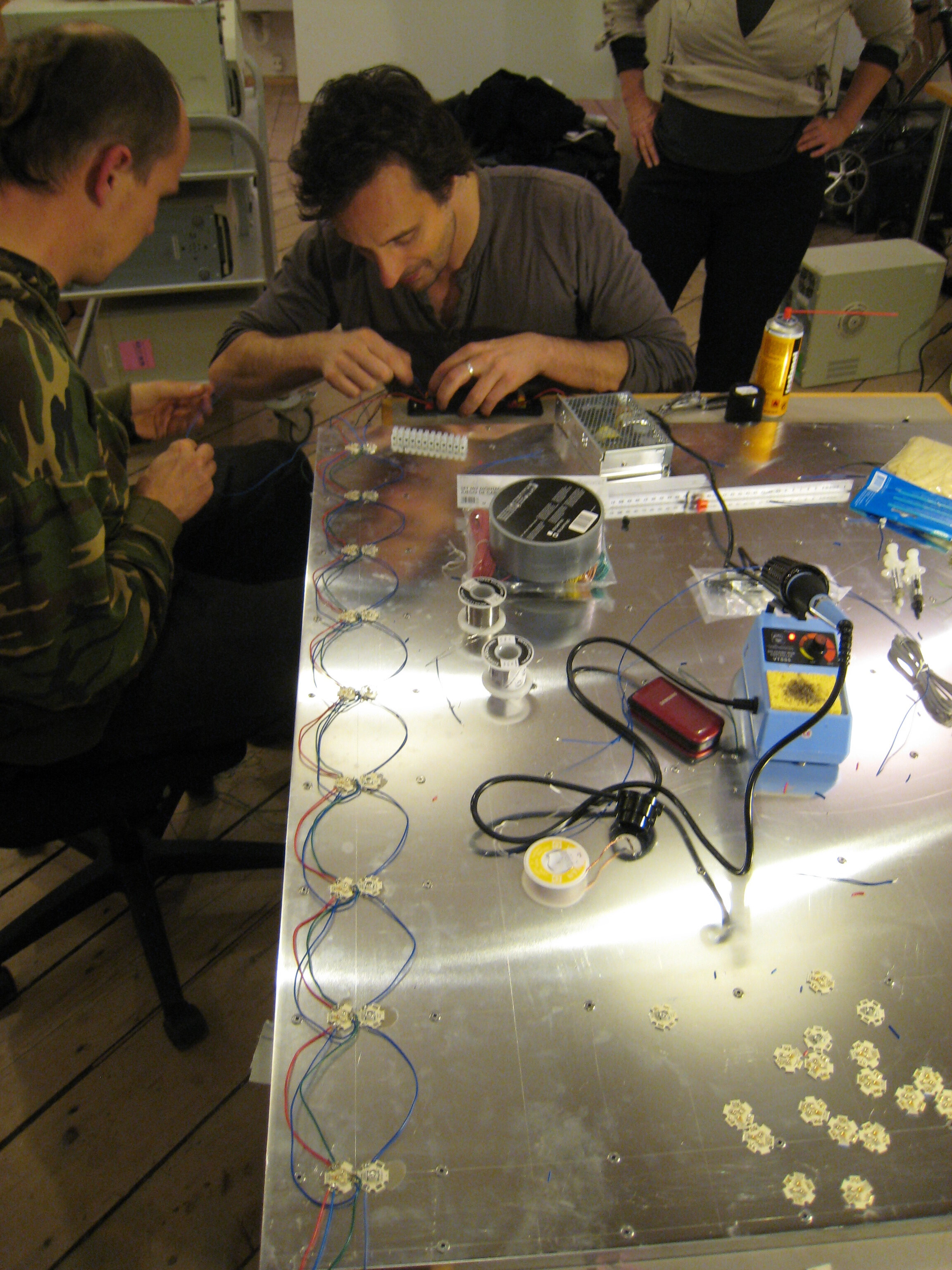
Most Blue Skies
Most Blue Skies I + II is a computer generated installation that attempts to find “the bluest skies” in the world. The project measures the passage of light through particulate matter in the atmosphere, and calculates the exact colours of the sky at billions of places on earth. Using a complex system of satellite data acquisition and atmospheric simulations, the project continuously calculates the place on earth that has the bluest sky and visualises the best possible approximation to that colour, as well as the name of the place where you should stand to see that sky. Most Blue Skies I + II combine atmospheric research, environmental monitoring and sensing technologies with the romantic history of the blue sky and it’s fragile optimism, and addresses our changing relationship to the sky space as the subject for scientific and symbolic representation.
Project Team
Core Team
Lise Autogena - Artist
Joshua Portway - Artist programmer
Tom Riley - Programming
Advisors
Chris Gueymard - SMARTS atmospheric radiative transfer model
Supported by
The Alexandra Instittute
The Danish State Workshops
CAVI- Aarhus University,
DFDS Seaways
Projection Design
DAF - Denmark, Alexandra Institute, Denmark
Space and Atmospheric Physics at Imperial College
UK Meteorolgical Office
The UCL Colour and Vision research laboratory
NASA
The Physical National Renewable Energy Laboratory, US
The Danish Film School
Zentropa.
Funded by
Arts Council UK
Arts Council of Denmark
The Danish Art Foundation
The Gulbenkian Foundation
NESTA
Tekne Productions
Exhibitions
2006
The International Gwangju Biennale
South Korea
2009
Nikolaj Copenhagen Contemporary Art Centre. Commissioned for the COP-15 UN Climate Summit. Denmark
Rethink Climate
2010
Stockholm, Sweden
Tensta Kunsthalle
2011
The Arts Catalyst, London, UK
Data Landscapes
2012
Domaine de Chamarande, Paris, France














